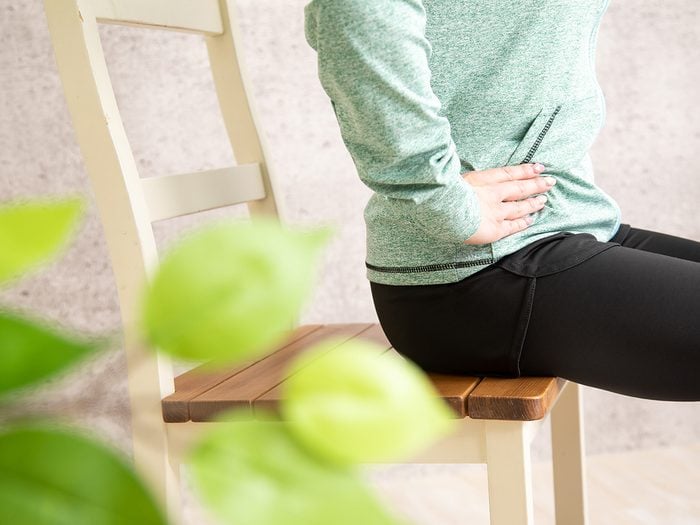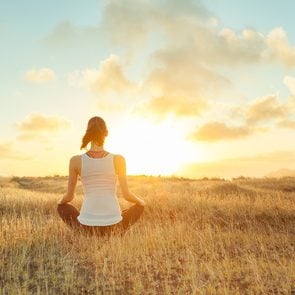I Tried Chair Yoga—Here’s What It Was Like

Could this popular senior fitness trend benefit desk-bound workers like me?
I used to be fit. Almost—dare I say—sporty? I ran, played tennis, did Pilates, rode my bike everywhere and actually used my gym membership. But thanks to a mounting list of injuries and the creaky indignities of middle age, the most vigorous workout I do these days is walking around the block or stretching in front of the TV. But when I came across a big European study touting the benefits of chair yoga for seniors, which included better overall physical health and even strength building, I decided to try it (even though I’m not technically yet a Golden Girl.) Doing yoga for 15 minutes a day—unlike the intense ashtanga yoga that I used to do for TWO HOURS (!?) in another life—seems right about my speed these days.
What is Chair Yoga?
Chair yoga involves poses like twists, hip stretches and bends that are modified to be done while sitting on your tuchus on a chair (or, sometimes, standing while using the chair for support). While one of its major benefits is that it can improve your sense of proprioception (knowing where your body is in space, which helps prevent falls), I quickly discovered that it’s also a handy body break for desk-bound workers—and there are specific regimes for rehabilitating injuries like Achilles tendonitis or knee issues. It may not be TWO HOURS (!?) of ashtanga yoga, but all the evidence around moving your body versus not moving your body says that something is always better than nothing, and there’s nothing I like in an exercise regime better than low expectations.
Michael Hutkins teaches chair yoga at retirement homes in Quebec and Ontario and also trains other instructors to lead chair-based classes. He says that in addition to all of the practice’s physical benefits—including lubricating your joints and improving digestion by moving, and preventing repetitive injuries through wrist and finger exercises—the biggest benefit can be mental.
“When you breathe easier your mind also calms down,” he says. “That helps you with things like anxiety and negative emotions or stress over things you can’t control.”
Finding the Right Routine
I queue up one of the approximately 500 million chair yoga videos on YouTube (try Gentle Chair Yoga by Cara Kircher, or her Intermediate Chair Yoga routine if you’re feeling tough.) The 10-minute routine—what? I don’t want to overdo it!—is a combination of slow movements that I personally refer to as “Memories of Yoga.” In each position my body remembers all that yoga I used to do 15 years ago. Which isn’t to say it’s not challenging—I’m mortified to discover that it is—but that I instantly know what pose the chair version is modifying. And while I probably couldn’t get through a regular yoga class anymore, this way I still get to experience some of the sense of focus and accomplishment of being in that yoga “flow.” I do 10-20 minutes each day for about a week, and because it’s not too high energy I can even do it in that annoying dead time in the evenings when I’m too tired to work but I can’t settle into a TV show because my kid isn’t in bed yet.
I don’t hate it. Chair yoga probably isn’t going to turn me into a hard-bodied gym bunny, but I notice that my neck and shoulders—constantly sore from staring at a computer—become less tight, and it’s also surprisingly useful for helping my mood. It’s almost like mentally changing the channel—even for such a short period of time—resets my grumpy brain from a state of stomping around to one of just irritated sighing. I’ll take it.
Now that you’re familiar with chair yoga, find out what happens to your body when you start walking 10,000 steps a day.






